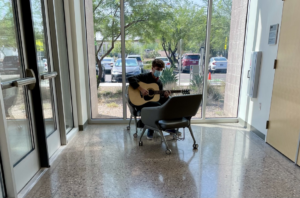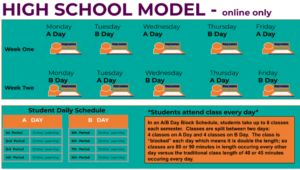Personalizing Online Language Learning

By Janice Walton
In 2015, it was reported that only 7 percent of college students in the United States were enrolled in a foreign language course. The same report, by the Atlantic, pointed out that only 1 percent of adults are proficient in the language they studied in high school, and if you attended high school in the United States chances are pretty high that you took a foreign language course to graduate.
One could potentially conclude, then, that if students aren’t taking language classes in college, and perhaps are relying on their high school knowledge, then they are left underprepared in terms of language acquisition. If these trends continue, what is the potential impact on areas such as the future of work in the United States? In March 2017, the New American Economy released a report entitled “Not Lost in Translation: The Growing Importance of Foreign Language Skills in the US Job Market” which discovered five key findings:
Aside from the reality that the workforce is yearning for future employees who are bilingual, research gathered by the American Council on the Teaching of Foreign Languages outlines a number of positive impacts that learning a foreign language can have including:
- Academic achievement,
- Cognitive development and abilities, and
- Positive attitudes and beliefs about other cultures.
Language learning is not just a nice to have, it is an imperative for all 21st-century citizens. So how do we ensure there are high-quality language learning options for all students? The 2017 report “America’s Languages: Investing in Language Education for the 21st Century” from the Commission on Language Learning, convened by the American Academy of Arts and Sciences, recommends five-capacity building goals for language learning in the United States:
- Increase the number of language teachers at all levels of education so that every child in every state has the opportunity to learn a language in addition to English.
- Supplement language instruction across the education system through public-private partnerships among schools, government, philanthropies, businesses, and local community members.
- Support heritage languages already spoken in the United States, and help these languages persist from one generation to the next.
- Provide targeted support and programming for Native American languages as defined in the Native American Languages Act.
- Promote opportunities for students to learn languages in other countries by experiencing other cultures and immersing themselves in multilingual environments.
We would also add a sixth recommendation to this list which is to promote opportunities for online language learning. There are many online language learning options available and we recently chatted with italki to learn more about their online marketplace. italki’s online marketplace helps a learner become fluent in a foreign language through online lessons with native teachers. Personal lessons encourage language learning in an authentic way while making real human connections through language and culture.
Lessons on italki are personalized for every student, and this is because every student chooses their own teacher. There are over 5,000 teachers on the site, including both experienced professional teachers and native speaking tutors. On italki, the teacher and the student figure out the learning experiences that will work best for both of them. This is a unique aspect of the italki online marketplace, while it is online learning a learner also has the benefit of learning from a teacher in real-time.
In an efficacy study about the use of italki, Dr. Roumen Vesselinov of Queens College and Dr. John Grego of the University of South Carolina found that a learner could complete the equivalent of a college-level language course with 19 hours on the italki platform. Students included in the sample for this study were chosen randomly and many jumped multiple semesters without having basic knowledge of the language. The findings of the study led the researchers to conclude that the course opens up the door to options in learning a language, and emphasizes the fact one can always begin the learning process–whether in school or at their home, at any age. Given the current success rate of typical language courses, the results of the study are impressive.
We live in an increasingly interconnected time where we can seamlessly communicate with individuals from around the world. While communication is being sped up through technology, language is still one of the common threads that connect us. New information from the Census Bureau’s American Community Survey points out, “Between 2012 and 2016, 21.1 percent (63,172,059) of the population age 5 and older spoke a language other than English at home, an increase from 20.3 percent in the 2007-2011 American Community Survey five-year estimates data.” As these trends continue to rise both in the U.S. and abroad, learning another language will become an essential skill to prepare for the future of work and global citizenry.
For more, see:
- Online Language Learning Toolkit
- Infographic: Next-Gen World Language Learning
- Next-Gen World Language Learning
Stay in-the-know with all things EdTech and innovations in learning by signing up to receive the weekly Smart Update.








0 Comments
Leave a Comment
Your email address will not be published. All fields are required.